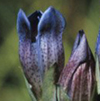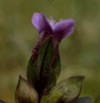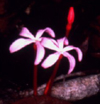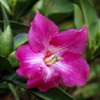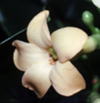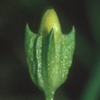SEARCH the
Gentian Research Network
and Rutgers University:
GENTIANS
Classification (newest)
List of genera
List by tribe
Gentian characteristics
Gentianales
RESEARCH
Research projects
People, addresses
Literature, publications
Links
Add info to
this site
TOPICS
Anatomy
Common names
Ecology - Natural history
GEOGRAPHY
Floras
Latin America
North America
TRIBES
Saccifolieae
_____________________
Information in other languages:
_____________________
This page
is maintained
by Dr.
Lena
Struwe
(e-mail),
and hosted by
Rutgers University, USA
updated: 01/18/11

“Gentians, the real aristocrats in the plant empire” (Halda, 1996: 7)
IMPORTANT! The Gentian Research Network
is
a free, not-for-profit, web-based forum for worldwide research on the natural
history
and evolution of the flowering plant
family
Gentianaceae (gentians).
Here you will find information on current research projects in the Gentianaceae, focusing on their systematics, evolution, molecular systematics, classification (Struwe et al. 2002 or most current), ecology, biogeography, endangered species, biodiversity, distribution, anatomy, morphology, palynology, ethnobotany, and nomenclature. We also have a link to a large reference list, floristic works, images, research projects, and contact information for researchers and photographers. Gentian species occur around the world and have many different names, for example: centaury, çentiyane, chirayta, chirata, and chiretta, Encian, Enzian, fever tree, genciana, gentian, gentiane, genziane, long dan ke, pua keni keni, rindo, and tembusu. Gentians are gorgeous and have been used for millenia in horticulture, as medicines, and are also important in ecosystems as food sources for butterflies, nectar sources for pollinators, and many other functions. Welcome to the Gentian Research Network!
Quick links to genera of Gentianaceae: This site is supported by funding from:
Copyright notice: All information on this web site is copyrighted and cannot be used for any commercial or public purposes without prior permission. Educational, research, and non-profit use is allowed, if you cite the source (as Gentian Research Network, or when applicable, individual copyright holders). Look at the bottom of each page for additional author information. Copying of text to be posted on other websites is not allowed without permission. All images and photos are copyrighted by the photographer, illustrator or other source - if you want to use them for any purpose you need to get specific permission for each image. Contact the photographer or illustrator directly; Gentian Research Network does not give out permission for use of images posted on this site, each photographer/illustrator/publisher does. Exception: Elementary and secondary school children (grade K-12) worldwide are encouraged to use any images for their private school work or reports, and can do so without prior permission from photographers and illustrators. Please cite Gentian Research Network and the photographer as the source. Thanks for respecting these rules!
|
Information in: |






